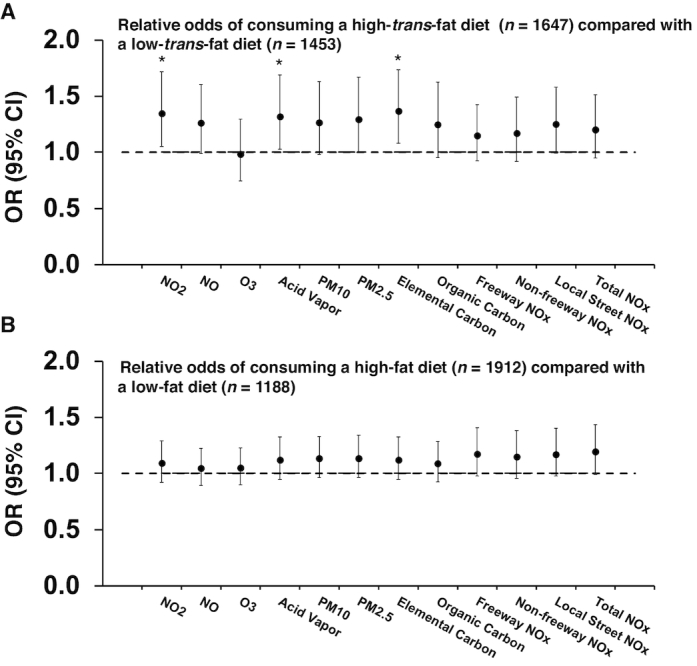FIGURE 1.

Associations between childhood air pollution exposures and the relative odds of consuming a high-trans-fat diet (≥2% calories from trans fat) compared with a low-trans-fat diet (<2% calories from trans fat) (A) and of consuming a high-fat diet (≥30% calories from total fat) compared with a low-fat diet (<30% calories from total fat) (B) among 3100 adolescents. A generalized mixed-effects model with logit link function was used to estimate the associations of childhood exposures to regional and traffic-related air pollutants with the relative odds of consuming a high-trans-fat or high-fat diet compared with a low-trans-fat or low-fat diet classified from longitudinal assessments. A random intercept for communities and individuals was used to adjust for the study design clusters of communities and internal correlations of repeated dietary assessments from each individual. In addition, age, sex, ethnicity, parental educational levels, household income, number of team sports attended in the last 12 mo, in utero exposure to maternal smoking, second-hand smoke and personal smoking, indoor use of a gas stove, frequencies of having dinner prepared away from home, season of dietary assessment, and the indicator variable for study cohorts were adjusted for as potential confounders. The effect sizes were scaled to 2-SD ranges of each air pollutant exposure (see more details on the SDs of each air pollutant in Table 2). *P < 0.05. NO, nitrogen oxide; Non-freeway NOx, the sum of local street NOx and highway-related NOx; NOx, nitrogen oxides; NO2, nitrogen dioxide; O3, ozone; PM2.5, particulate matter with aerodynamic diameter <2.5 µm; PM10, particulate matter with aerodynamic diameter <10 µm; Total NOx, the sum of non-freeway NOx and freeway NOx.
